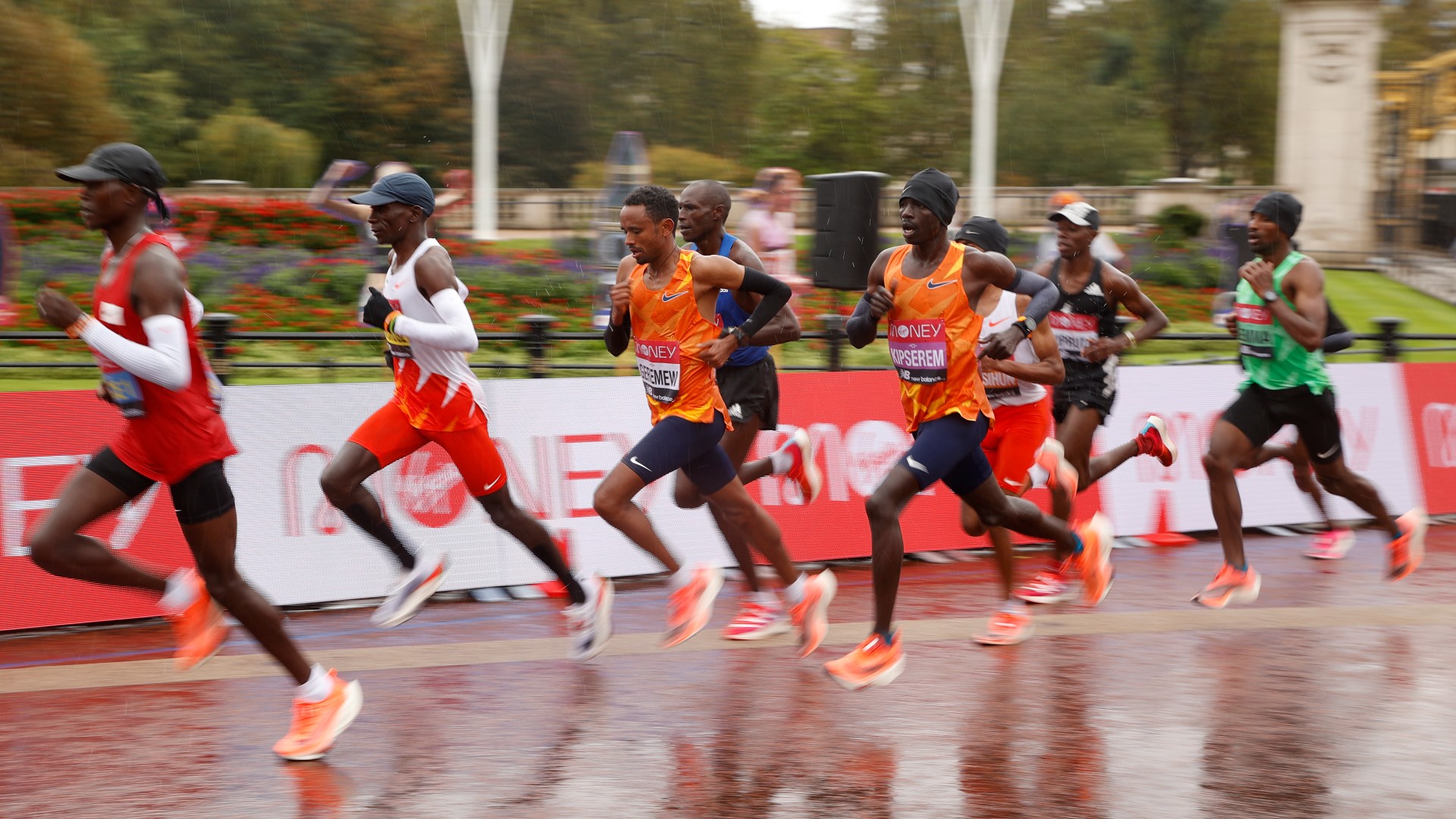How To Improve Your Running Form
Tweak your technique to become a more efficient and resilient runner

If you have ever watched marathon world record holder Eliud Kipchoge, or indeed any other elite athlete, tearing up the road you will probably have been struck with how effortless they make running very fast for a very long time look.
Part of that comes down to incredible natural talent and a full-time training regime, and part of it is down to the time spent honing their running form to make their mechanics as efficient as possible.
Your running form makes a big difference to both performance and resistance to injuries, so it’s something that all runners should consider improving. For more information about what you can do to improve your running form we quizzed Jenny Blizard, a physio speaking on behalf of healthcare company Simplyhealth. Spoilers: You’ll want to read about strength training for runners next, although you may want to brush up on the terms used below with our running technique jargon buster first.
Is there such a thing as perfect running form? Should we all be trying to copy Eliud Kipchoge?
Kipchoge and many other elite runners have a very efficient running style, with a mid-foot strike, an average cadence of 180, a forward lean and a high rear knee swing, but that is governed by many factors. And this efficient style doesn’t happen overnight – it requires persistence and patience.
There’s a running form we can all aspire to, but running mechanics are determined by a number of factors. The strength and flexibility of your muscles is one, and another big one is the environment you live and work in. Then there’s the age you come into running, plus previous injuries, previous sports you’ve played, your genes, how much running you do… There’s a lot of factors that will determine how efficient your running style can be.
What we’ve seen is that people have gone to extremes trying to change things while running and they’ve got injured. For example, a heel striker can try going on to the forefoot, but maybe they’re not fast enough to get onto their forefoot and a heel strike is the right thing for them at that time. Or we see people trying to change too many things when running, which can also create injuries.
How do you go about changing your running form?
The bulk of trying to change running style is done not when running, but outside of running. You should definitely work on strength and conditioning. If you look at the research into runners, what they neglect is often basic strength and conditioning. Weight training three times a week – squats, lunges, that kind of thing. You need that overall body strength to reduce your injury risk and become stronger.
Get the Coach Newsletter
Sign up for workout ideas, training advice, reviews of the latest gear and more.
Another thing is looking at your functional movement patterns. It’s surprising how many runners can’t squat properly or balance on one leg. Those are basic functional movements that we’ve lost because we’re sitting so much of the time.
Then there are just normal running drills to improve your running form. People can also try some mobility work – walking lunges with trunk twists, knees to chest, side lunges, arm circles – before they go out running. That can make such a difference.
What should you focus on when you are running?
If you just work on one cue, it will have an effect on the rest of your body. For instance, if someone is looking down at the ground too much, that is going to affect their posture. Start with your head and your feet will follow. If you start looking 50 metres ahead a nice forward lean is going to follow.
If you’re lifting your arms too high or bringing them too far across the body, relax your arms and swing them at your sides so they don’t come across your midline. If you’re swinging your arms too much your legs are going to snake [swing off centre] underneath you.
If you’re over-striding, start with trying to keep your stride a little bit shorter, which will reduce your heel strike, which is then going to make you run taller. If you work on landing with your feet just in front of you, you will lean forward more.
Some people also struggle with breathing. If you just do some pursed-lips breathing that will change your running posture. If you breath from your belly, your shoulders will relax
It’s about finding that cue that works for you. Then if that works, you can try another one. Just don’t try to use all the cues in one session!
Do beginners need to consider their running form?
Definitely. Get gait analysis or a biomechanical screen done early on in your running, rather than leaving it and letting patterns become embedded in your running style over time. You can spend 12-16 weeks doing a couch to 5K programme. If you use that time to work on form as well, you’re going to be so much better placed at the end of that period to really crack on with your running.
If you’re not having any injury issues, is running form something you should consider?
If you want to get better and more efficient, yes. Just because you’ve not got any injuries that doesn’t mean you’re running efficiently. There are always improvements you can make. It’s something you continue to work on over time and a lot of runners miss out on that.

Nick Harris-Fry is a journalist who has been covering health and fitness since 2015. Nick is an avid runner, covering 70-110km a week, which gives him ample opportunity to test a wide range of running shoes and running gear. He is also the chief tester for fitness trackers and running watches, treadmills and exercise bikes, and workout headphones.









